Al Grano: Formas de pensar mundos
Installation: Vinyl Cutouts, 3D prints
Festival Internacional de la Imagen
Centro de Museos de la Universidad de Caldas
Manizales, Colombia
May 2014
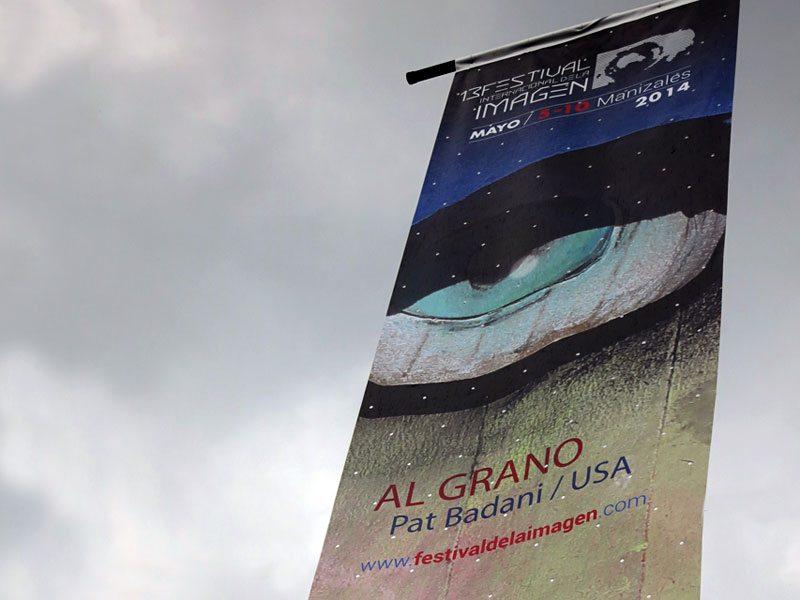
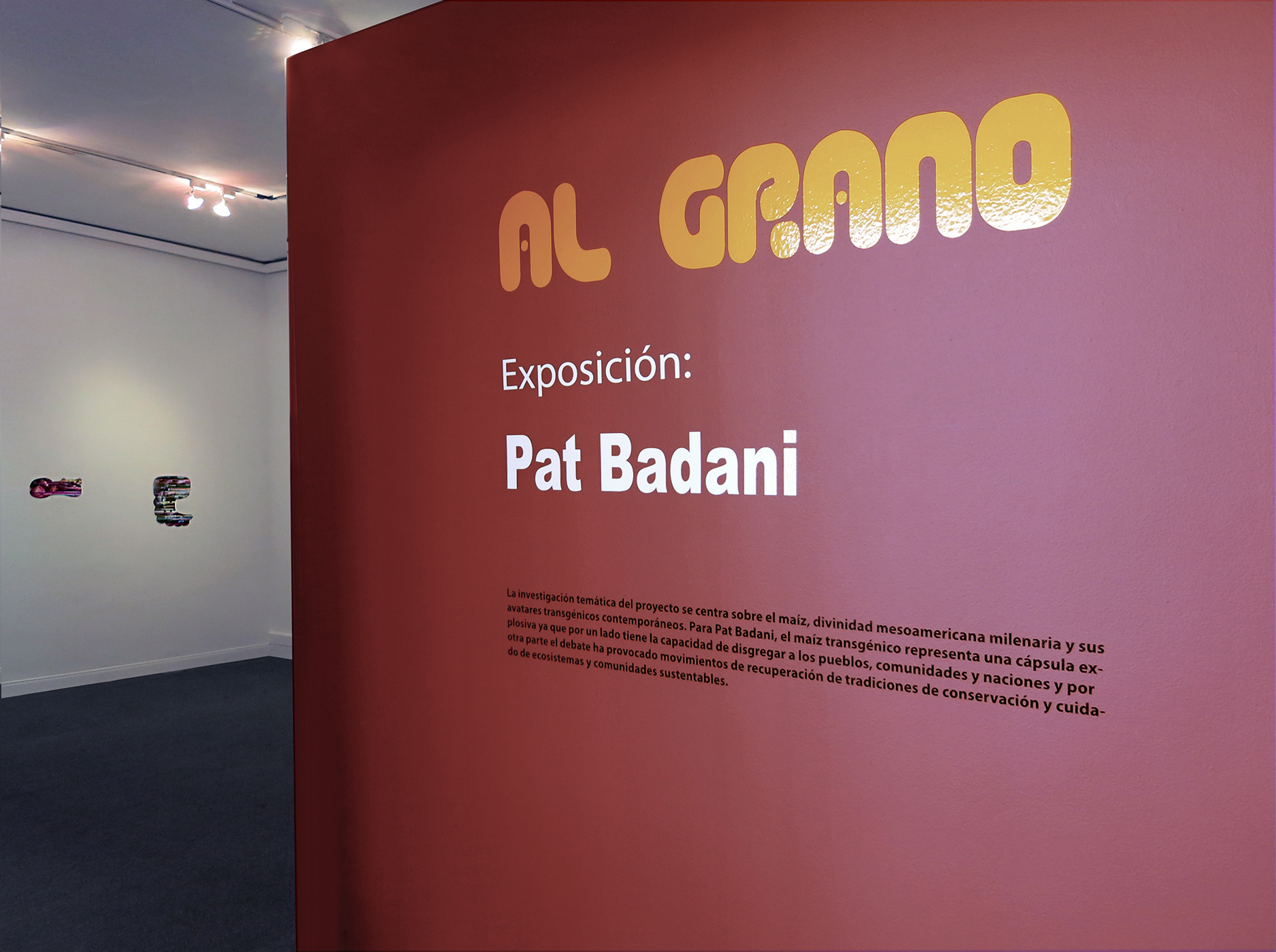
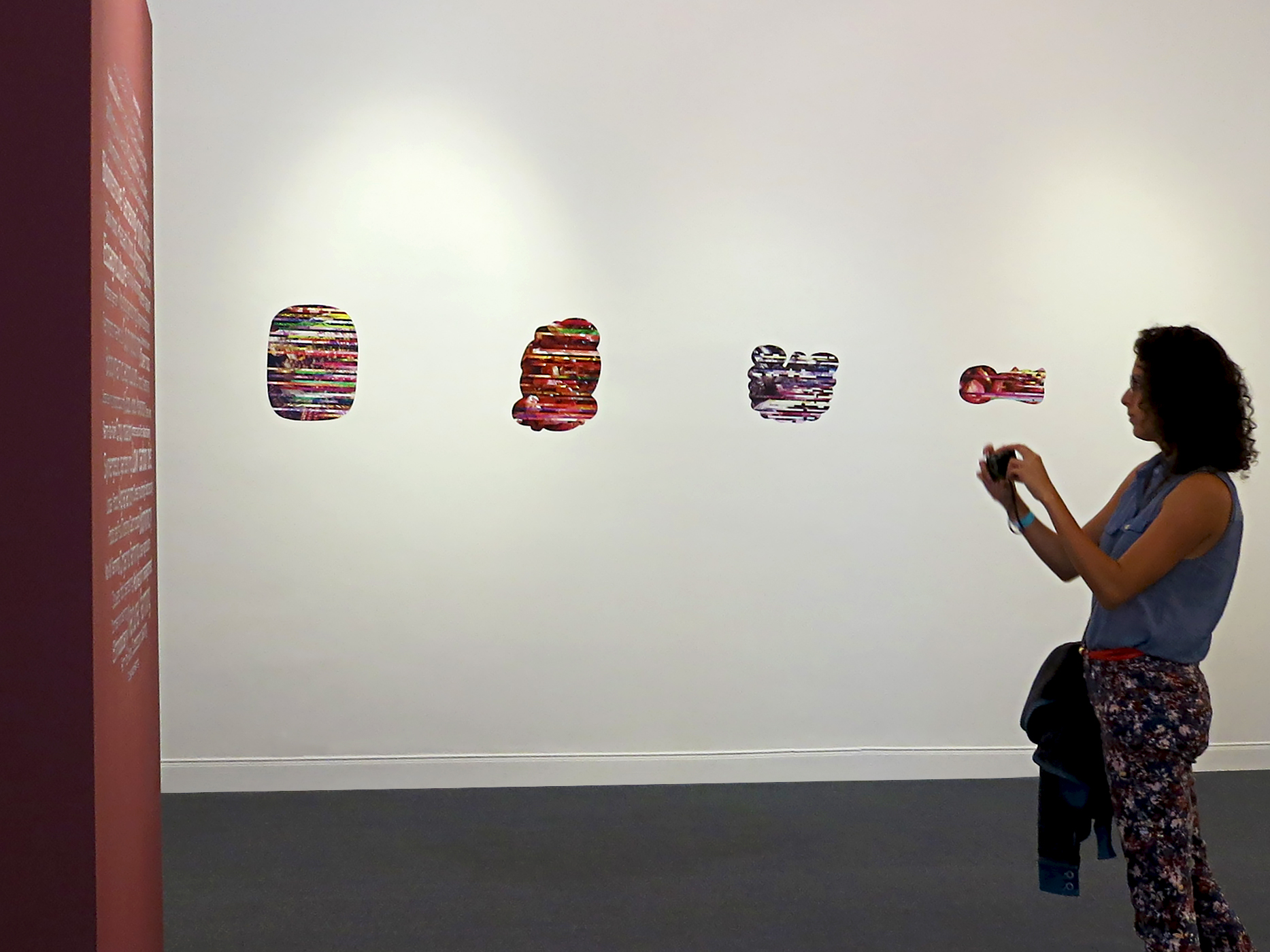
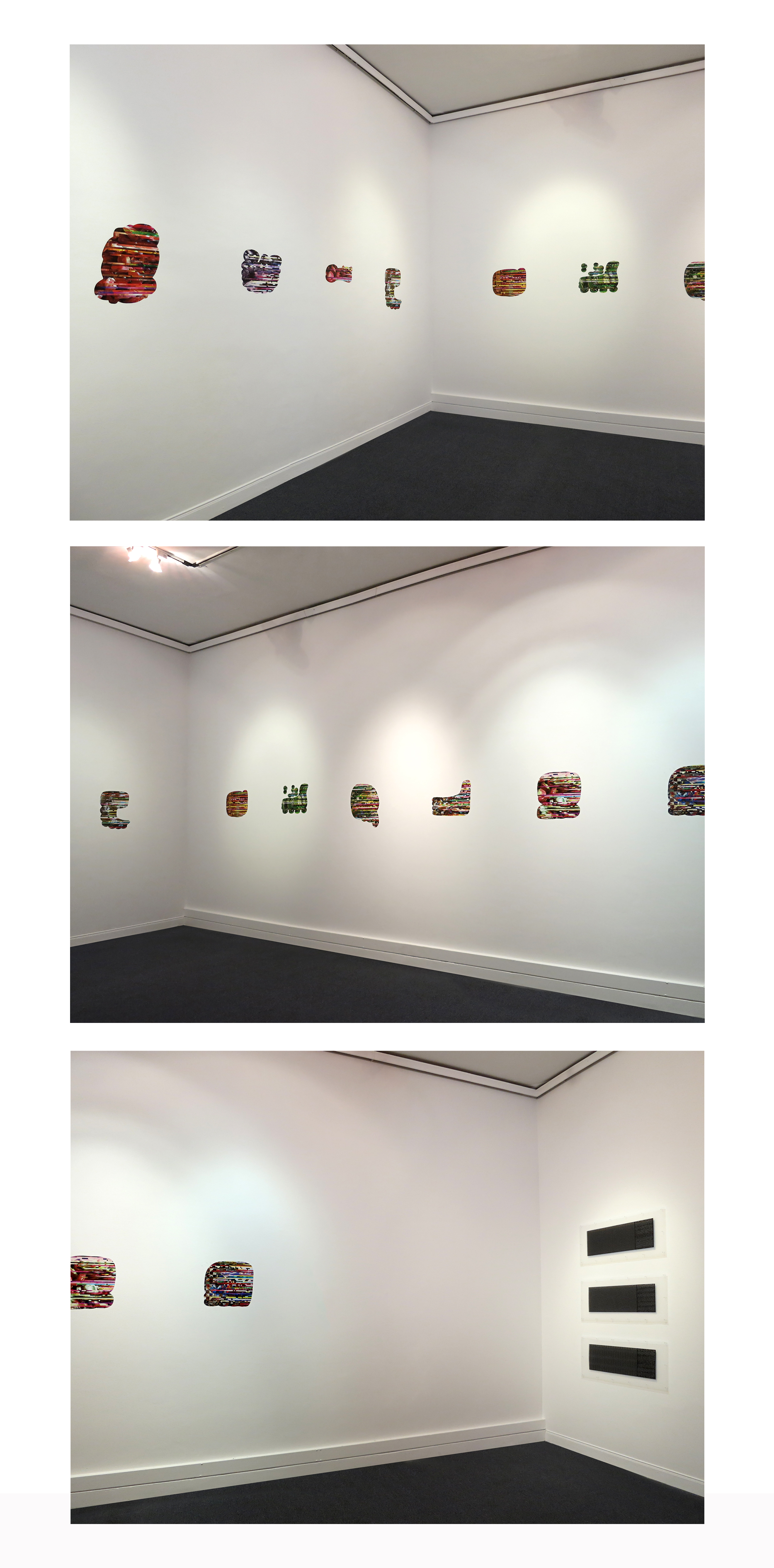
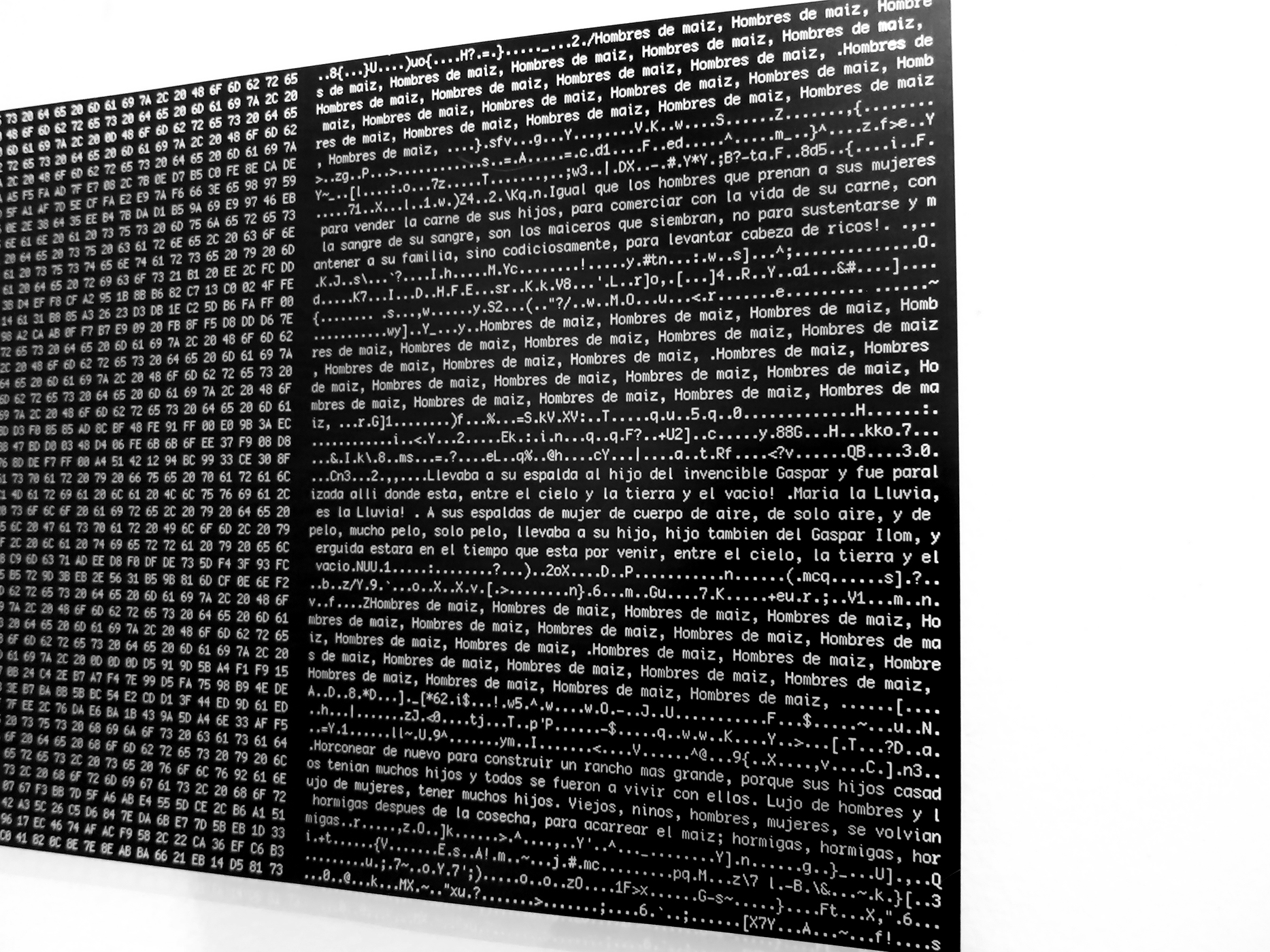
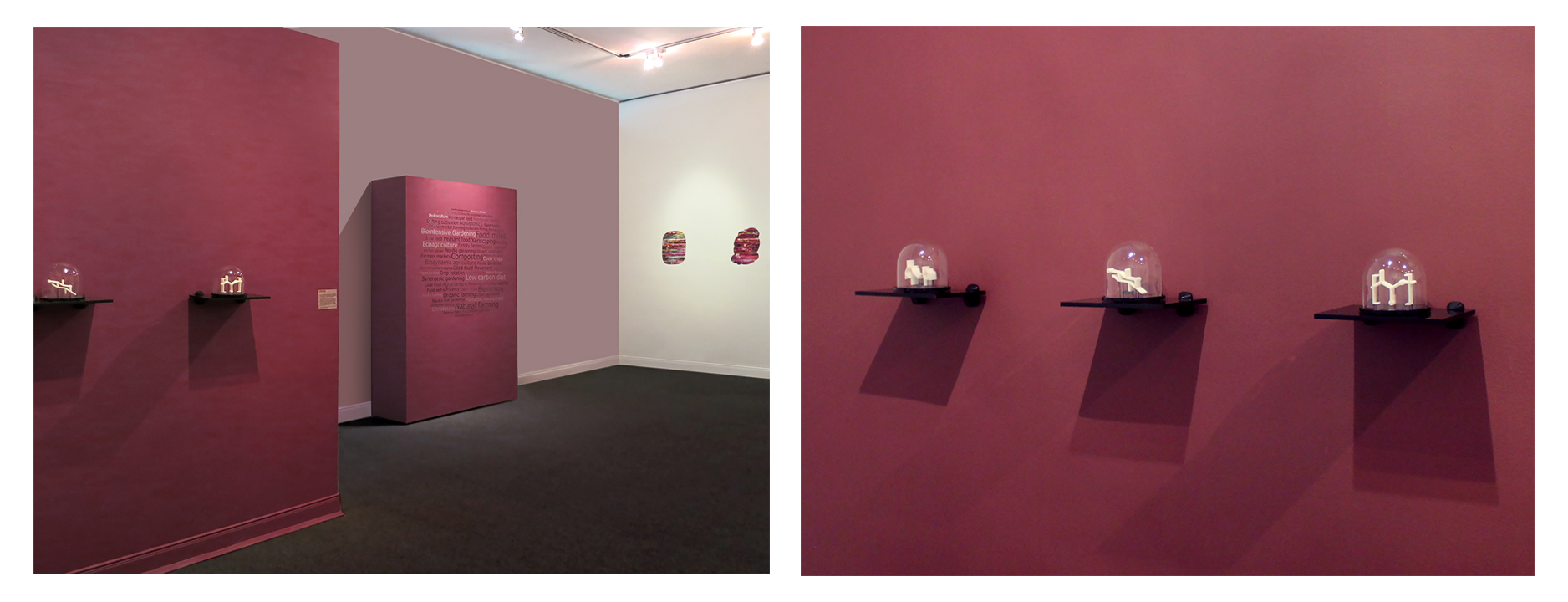

Installation detail showing glass dome structures encasing three 3D prints representing the chemical formula of fructose, amalyse, and polylactic acid (PLA), all derived from corn. A 3D printer, using PLA bioplastic, was used in production of the sculptural objects. They were designed and fabricated in collaboration with Chris Wille
For me, a seed of transgenic corn represents an explosive capsule that on the one hand has the capacity to divide communities and Nations, and on the other hand the ensuing debates have caused movements of conservation and care of ecosystems, the development of sustainable communities around food safety issues, and the recovery of agricultural traditions. In sum, the seed encapsulates concentrated material rich enough to reflect on endangered worlds as well as new worlds in gestation.
“Al Grano: Formas de pensar mundos” is a gallery installation composed of 3 interwoven works that speak to these ideas.
Al Grano: Hack
Based on the manipulation of digital codes - the underlying language of genetic systems - “Al Grano: Hack” is a series of electronically corrupted digital images of corn. In a gesture of symbolic resistance, I hacked the numeric code of genetically modified corn images and added information that was not previously there; texts that reference Latin American culture and accentuate the position of Mesoamerican indigenous populations in their rightful fight to sustain cultural and agricultural knowledge of vital importance for future generations world-wide. This gesture counteracts the practice by American multinational agricultural biotechnology corporations, who hack the genetic code of domesticated seed varieties to appropriate millennial indigenous knowledge for corporate profit.
Al Grano: injection-infection
The piece is composed of three objects showing the structural chemical formula of fructose, amalyse, and polylactic acid (PLA), all derived from corn. A 3D printer, using PLA bioplastic, was used in production of the sculptural objects.
“Al Grano: injection-infection” addresses concern with large-scale production of transgenic corn by agricultural engineering industries for optimization of crop yield. The deception is that bio-products sourced from grown and harvested transgenic cropland, do not actually live up to the claim that they are beneficial, healthy and safe. Corn Fructose Syrup (HCFS), corn plastics (PLA), and corn-based ethanol (amalyse), are derived from genetically modified corn that causes a genetic and physiological imbalance in native maize varieties, disrupts local ecosystems, damages agricultural fields and also take away from local populations fields that could be used for food crops. (“Al Grano: injection-infection” was produced in collaboration with Chris Wille)
Al Grano: Lexis
This piece is an inventory showing the nomenclature of spaces related to sustainable ways to grow and distribute food. They point to practices of resistance and reconstruction of the food system, to movements of conservation and care of ecosystems, to the development of sustainable communities, and to the recovery of traditional agricultural knowledge.
Pat Badani